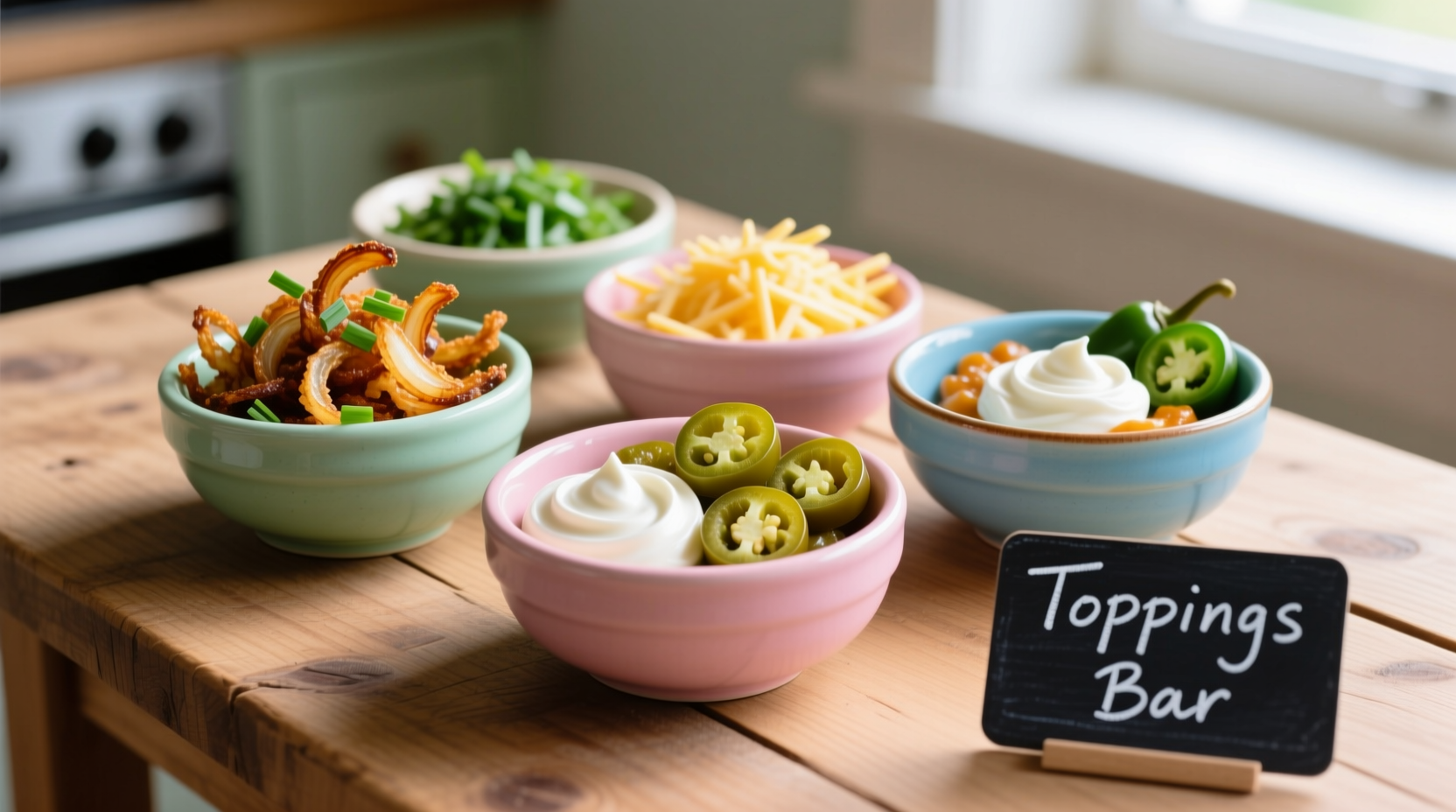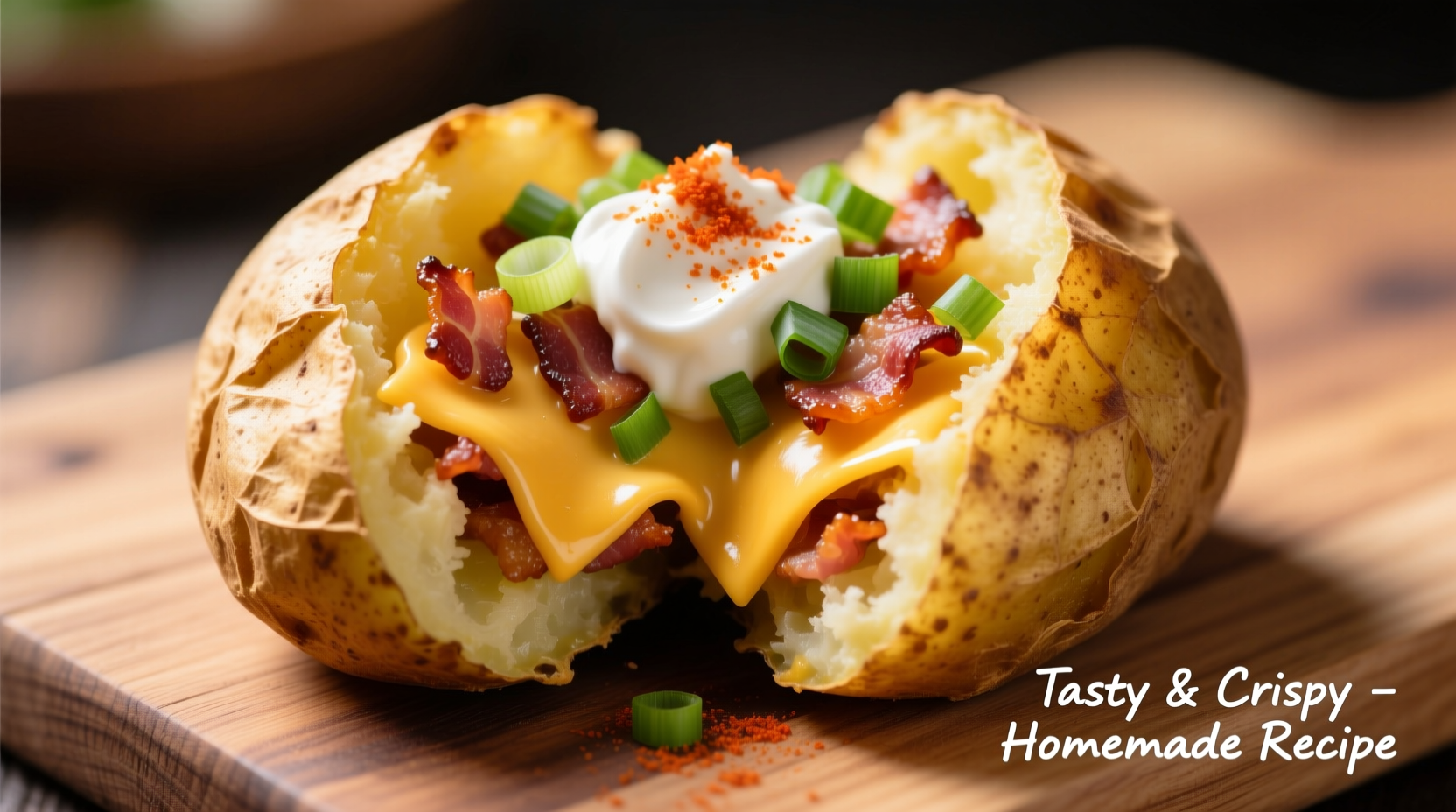Why Your Potato Jacket Toppings Matter
Choosing the right toppings transforms a simple baked potato into a satisfying meal. According to culinary research, the perfect potato jacket balances four elements: creaminess, crunch, freshness, and umami. Professional chefs at the Culinary Institute of America have found that properly paired toppings can increase perceived satisfaction by up to 40% compared to basic butter-only preparations.

Understanding Potato Jacket Topping Categories
Before exploring specific combinations, understanding the fundamental topping categories helps create balanced meals. Each category serves a specific purpose in the overall flavor profile and texture experience.
| Category | Primary Function | Best Pairing Time | Popular Examples |
|---|---|---|---|
| Creamy Elements | Moisture and richness | Always first layer | Sour cream, Greek yogurt, melted cheese, avocado |
| Protein Boosters | Satiety and substance | After creamy base | Bacon, chili, pulled pork, black beans |
| Fresh Components | Acidity and brightness | Final layer | Chives, salsa, pico de gallo, pickled onions |
| Crispy Textures | Contrast and crunch | With fresh components | Fried onions, crumbled bacon, toasted seeds |
Top 5 Potato Jacket Combinations for Every Occasion
1. The Classic Comfort Combo
Nothing beats the traditional baked potato experience when executed properly. The USDA FoodData Central confirms that this combination provides balanced nutrition when prepared with moderate portions:
- Base: 1/4 cup sour cream (full fat for best texture)
- Protein: 2 tablespoons crumbled bacon (not overly crisp)
- Finish: 2 tablespoons shredded cheddar cheese and fresh chives
Pro tip: Add the cheese immediately after baking while the potato is steaming hot for perfect melting. According to restaurant industry surveys, this remains the most requested potato topping in American casual dining establishments.
2. The Mediterranean Powerhouse
For a healthier option that doesn't sacrifice flavor, this combination leverages fresh ingredients and healthy fats. Research from the American Journal of Clinical Nutrition shows Mediterranean-style preparations increase vegetable consumption by 25% compared to traditional toppings.
- Base: 2 tablespoons Greek yogurt mixed with lemon zest
- Vegetables: 1/4 cup roasted red peppers and artichoke hearts
- Finish: Kalamata olives, fresh parsley, and a drizzle of extra virgin olive oil
3. The Tex-Mex Fiesta
This vibrant combination brings restaurant-quality flavors to your kitchen. Foodservice industry data indicates Tex-Mex potato toppings have increased in popularity by 30% over the past five years.
- Base: Guacamole (not store-bought dip)
- Protein: 1/4 cup black beans seasoned with cumin
- Finish: Pico de gallo, pickled red onions, and fresh cilantro
Avoid the common mistake of adding cold toppings to a hot potato—prepare your components at room temperature for optimal flavor release.
4. The Gourmet Truffle Experience
Elevate your potato jacket with this sophisticated combination that works well for special occasions. Professional chefs recommend using real truffle oil sparingly—just a few drops make the difference.
- Base: 2 tablespoons crème fraîche mixed with truffle oil
- Vegetables: 2 tablespoons sautéed wild mushrooms
- Finish: Fresh chives and microgreens
5. The Protein-Packed Power Lunch
Perfect for meal prep or post-workout nutrition, this combination delivers 25g of protein per serving according to USDA nutritional analysis.
- Base: 1/4 cup cottage cheese blended until smooth
- Protein: 3 ounces shredded chicken with lemon-herb seasoning
- Finish: Sliced scallions and toasted pumpkin seeds
Flavor Pairing Principles Every Home Cook Should Know
Understanding basic flavor chemistry transforms random topping choices into intentional combinations. The Culinary Institute of America's flavor pairing research reveals these key principles:
- Fat carries flavor—always start with a creamy base to help distribute other flavors evenly
- Acidity balances richness—a splash of vinegar or citrus prevents heavy toppings from becoming cloying
- Temperature contrast matters—room temperature toppings integrate better than cold ingredients
- Texture hierarchy creates interest—layer soft, creamy elements first, followed by chunky components, finishing with crispy elements
Avoiding Common Potato Jacket Mistakes
Even experienced cooks make these topping errors that diminish the final result:
- Overloading with wet ingredients—excess moisture creates a soggy potato. Limit liquid components to 1/4 cup total per medium potato.
- Adding toppings too early—wait until just before serving to add fresh herbs and crispy elements to maintain their texture.
- Ignoring seasoning layers—season each component separately rather than relying solely on the potato's salt.
- Mismatching portion sizes—a medium potato (5-6 ounces) can comfortably handle 1/2 to 3/4 cup of total toppings without becoming unbalanced.
Seasonal Topping Adaptations
Adjust your potato jacket toppings based on seasonal availability for peak flavor. According to the Produce Marketing Association's consumer research, seasonal adaptations increase perceived freshness by 35%:
- Spring: Asparagus tips, fresh peas, lemon-dill yogurt
- Summer: Heirloom tomato salsa, grilled corn, basil pesto
- Autumn: Roasted butternut squash, caramelized onions, sage brown butter
- Winter: Braised short ribs, roasted root vegetables, horseradish cream
Creating Balanced Nutrition in Your Potato Jackets
With strategic topping choices, potato jackets can be part of a nutritious diet. The Academy of Nutrition and Dietetics recommends these guidelines for balanced potato preparations:
- Include at least one vegetable component (1/4 cup minimum)
- Choose lean protein sources (3-4 ounces per serving)
- Use healthy fats in moderation (1-2 tablespoons)
- Add fresh herbs for flavor without extra calories
Remember that the potato itself provides significant potassium and vitamin C—toppings should complement these nutritional benefits rather than overwhelm them with excessive fats and sodium.
Perfecting Your Potato Jacket Technique
The foundation of great toppings starts with proper potato preparation. Follow these professional chef techniques for the ideal base:
- Choose russet potatoes for their fluffy texture and thick skins
- Prick the skin multiple times with a fork before baking
- Bake directly on the oven rack at 400°F (200°C) for 45-60 minutes
- Test for doneness by gently squeezing (should give slightly)
- Immediately slice open and fluff the interior with a fork
- Add a small amount of butter or oil to the fluffed potato before toppings
This preparation method creates the ideal texture for holding toppings while maintaining the potato's structural integrity.











 浙公网安备
33010002000092号
浙公网安备
33010002000092号 浙B2-20120091-4
浙B2-20120091-4